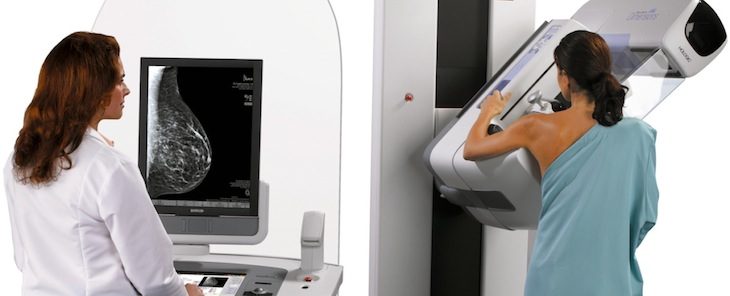New state law requires insurers to cover 3-D mammograms for breast screenings
by August 9, 2017 12:53 pm 3,481 views

A new state law that went into effect Aug. 1 requires insurers in Arkansas to cover the cost of 3-D mammograms and ultra sounds for routine screenings for women. The cost without insurance can range between $50 and $150.
Dr. Kelly Pierce, board certified radiologist at The Breast Center in Fayetteville, told Talk Business & Politics she and her partners have ponied up several hundred-thousand dollars of investment into new 3-D breast imaging equipment for their two locations in Northwest Arkansas which is now the standard of care at that facility.
Pierce said 3-D mammography has proven in many studies to be superior at detecting early cancers and it will be the baseline machine used for all patients going forward when it comes screenings for breast cancer.
Arkansas Act 708 signed into law in March says “an insurance policy shall not impose a copayment or deductible for screening mammogram.” The law specifically addresses Tomosynthesis, which is 3-D mammography that takes multiple images of the breast from different angles.
“This law passing has been a blessing because it elevates the standard of care to 3-D which has previously cost women more money because not all insurers have covered it. Cost for the 3-D mammogram is now covered with no out-of-pocket costs to the patients having screenings,” Pierce said. “Patients often assume the worst when they are called back from their screening mammogram for additional evaluation. … 3-D mammography has been shown to reduce the number of call backs which helps prevent stress and anxiety for our patients and also helps find more cancers.”
She said the new law standardizes the level of care and streamlines the inner workings of a clinic because of its universal nature. Prior to the law clerical staff would have to check with each insurance company and then determine how much the patient would have to pay out of pocket during the annual routine screening if they wanted to get the 3-D imaging. Historically, women with dense breast tissue have been encouraged to get the 3-D imaging, but Pierce said it works equally well in women without dense tissue in finding early cancers before they become invasive.
Pierce said the law is clear that insurance companies have to cover 3-D imaging for routine screenings and ultrasounds are also included in the new coverage. However, the rules about coverage for diagnostic screenings which occur when a patient is called back will still largely be paid out of pocket. The good news is that 3-D mammograms reduce the number of call backs related to calcifications or false positives and lets the health professionals focus more on finding cancers early. She said fewer errors and reduced additional testing leads to lower costs in the long run.
Arkansas follows Connecticut, New York, Texas and several others in mandating the insurance coverage. Medicaid and Medicare have covered 3-D mammography for many years.
Pierce said early detection is the key to most women successfully beating breast cancer. BreastCancer.org states about 1 in 8 women or roughly 12% will develop breast cancer over the course of her lifetime. This year an estimated 257,710 new cases of invasive breast cancer are expected to be diagnosed in women in the U.S. along with 63.410 new cases of non-invasive breast cancer.
While breast cancer is primarily a women’s disease, this year about 2,470 men will be diagnosed with invasive breast cancer. A man’s risk for this disease during his lifetime is about 1 in 1,000. Breast cancer awareness advocates said despite the better diagnostic testing about 40,610 women in the U.S. will die from breast cancer this year. About 30% of the newly diagnosed cancer in women this year will be breast cancer.
